Want to brighten up your living space? Houseplants are the answer, usually thriving in containers filled with potting soil. But what about compost—can it be a game-changer for your potted greens?
Growing plants indoors is a great way of brightening up your home. More often than not, houseplants are grown in pots and containers with potting soil.
Compost adds nutrients to improve the quality of soil, but can you use compost in containers for houseplants? Yes, you can!
While you don’t necessarily need a special kind of compost for your indoor plants, you’ll need to first look at the needs of your houseplants before potting or repotting them.
In this article, I’ll be discussing the best compost for houseplants in general, but keep in mind that a fern will require different soil than a cactus.
Compost For Indoor Plants
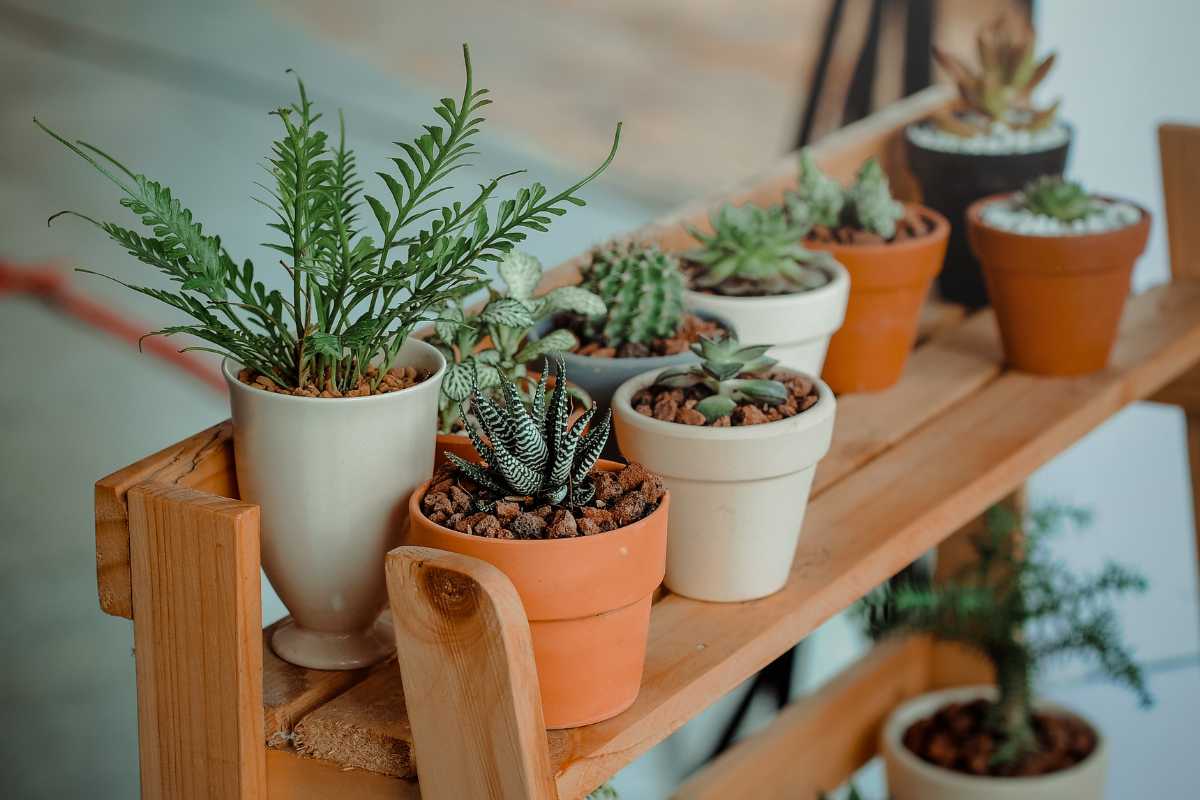
As indoor plants don’t have the option of sending their roots deep into the earth, you will want to give them all the nutrients in the soil.
Most plants like specific kinds of soil, so research your individual houseplants thoroughly and use different soil compositions depending on what houseplants you have.
Generally, houseplants like loamy soil. Loam is a mix of sand and silt with a small amount of clay. While you can use soil from your garden, some people prefer to buy it, as commercially available soil is treated to remove any unwanted seeds or bugs. The same goes for compost.
However, you can make compost tea from your outdoor compost and add this to the water when you water your houseplants to top up on nutrients regularly.
Other factors to consider are the weight of the soil. If you have hanging planters or place your plants on a shelf, the soil weight is more of a consideration than if your houseplants are on the floor.
Organic and non-organic soil have different weights, so do consider that. To decrease the weight of the soil, you can add some non-organic soil to the mix.
Additives like perlite, vermiculite and expanded clay pellets will lighten the load, as well as help retain moisture and aerate the roots of your houseplants.
Step-by-Step Guide for Using Compost in Houseplant Containers
So, is compost good for houseplants? You bet! But how do you go about integrating compost into your indoor gardening routine? Whether you’re wondering if you can use garden compost for houseplants or searching for the best compost for indoor plants, this step-by-step guide has got you covered.
Let’s dive into the nitty-gritty of using compost for houseplants to boost their health and vitality.
Step 1: Assess Your Houseplants’ Needs
Before you begin, it’s crucial to understand the specific needs of your houseplants. This will help you decide what is the best compost for indoor plants that you own. Do your plants thrive in acidic or alkaline soil? Knowing this will guide your compost choice.
Step 2: Choose the Right Compost
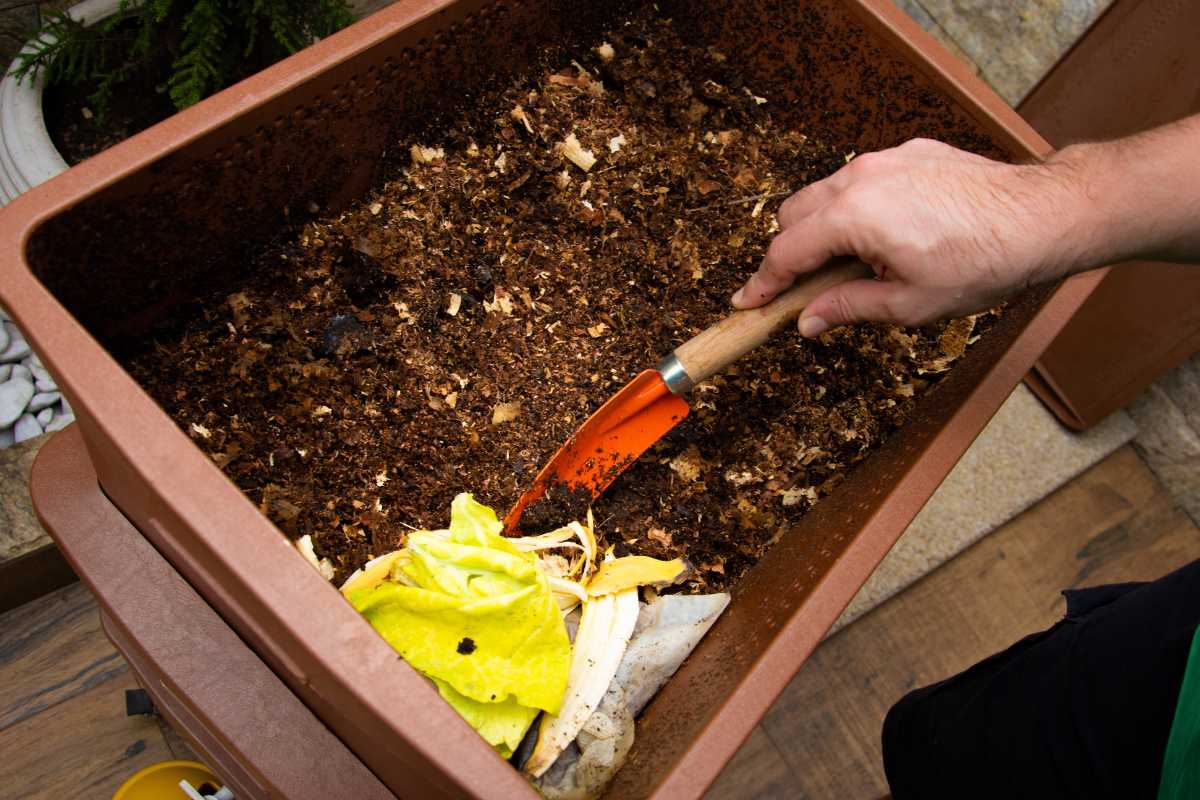
There are various types of compost for house plants, from general-purpose compost to specialized types like worm castings.
If you’re unsure, head down to the best compost for indoor plants section below.
Step 3: Preparing the Compost
If you’re using outdoor compost for indoor plants, it’s advisable to sterilize it first to remove pests and seeds. This can be as simple as pouring boiling water over your compost.
Step 4: Mixing the Compost
Compost for potted plants needs to be well-integrated with the existing soil. Use a trowel to mix the compost in pots, aiming for a uniform blend. This is especially important for indoor plant compost to ensure even nutrient distribution.
Step 5: Adding Vermicompost (Optional)
How to use vermicompost for indoor plants? This nutrient-rich form of compost can be mixed in with your chosen compost to further enrich the soil.
Step 6: Repotting Your Plants
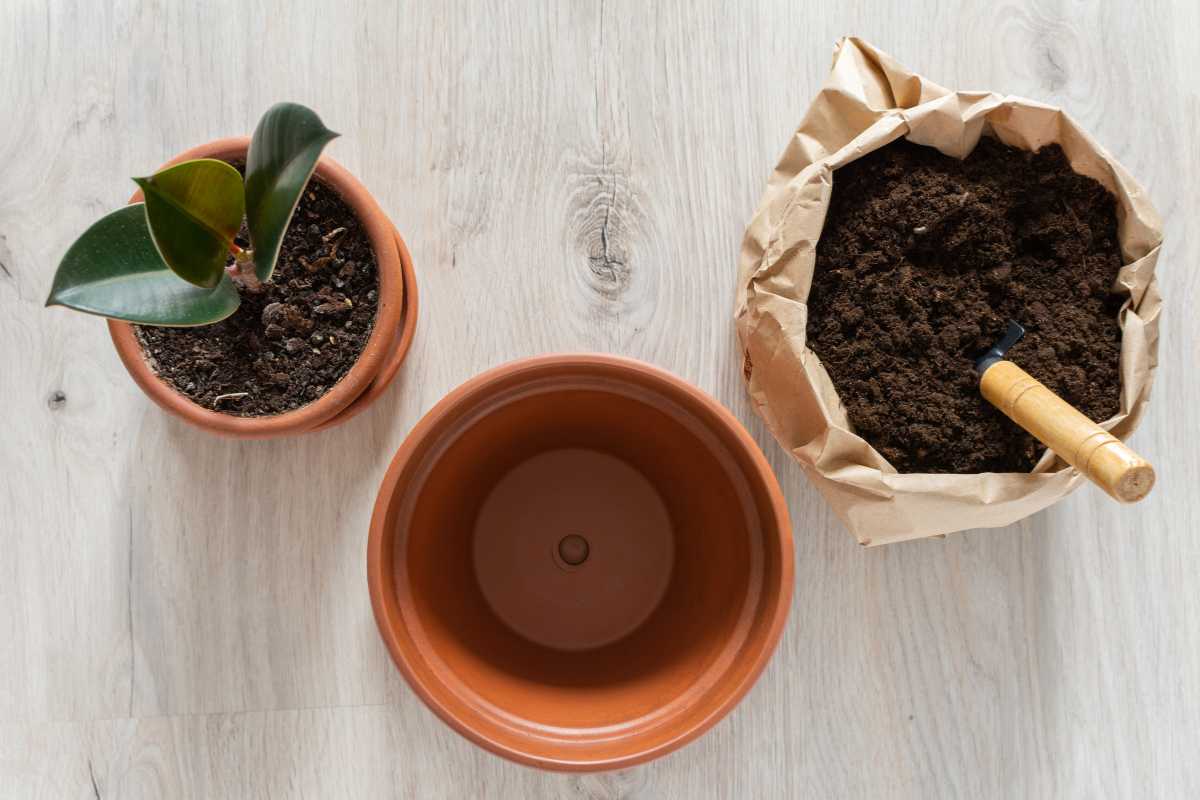
Now that your compost is ready, it’s time for repotting. Make sure to choose a pot that is just a size bigger than the current one to avoid overwatering issues.
Step 7: Aftercare
After repotting, water your plants lightly. Keep an eye out for any signs of nutrient imbalance or overwatering. Compost for potted plants usually reduces the need for frequent watering, so adjust your schedule accordingly.
Step 8: Ongoing Maintenance
Is compost good for houseplants in the long term? Absolutely. However, you don’t need to add compost regularly. Just top up when you repot the plants or notice they could use a nutrient boost.
Best Compost for Houseplants
The best compost for indoor plants depends on the type of plant you’re growing. Some plants grow better in acidic soils while others thrive in alkaline environments.
If you know which environment your houseplant likes, then you should choose the right compost accordingly.
For example, most succulent plants love an acid soil pH around 5.5 – 6.0. This means they would benefit from using peat moss based composts. Peat moss has a high nutrient content and helps maintain the correct pH level.
Your houseplants won’t need regular compost added. You’ll only need it whenever you repot your plants.
When the time comes to move them into a bigger pot, choose compost that matches the type of soil that’s already in there.
You can use general purpose compost, worm castings, or other specific types. If you’re growing cacti and succulents, you can get specialty compost just for them.
Due to the bugs and seeds that may be in your outdoor compost pile, you might want to buy commercial compost to use when repotting your indoor plants.
If you do want to use your own compost, there are a few tricks you can use to make it suitable for indoors.
- Pour boiling water over your compost.
- Fill a container with compost, without the plant in it. Leave the container somewhere warm, so any seedlings will sprout – in which case you can weed them out – and any bugs will move out.
You won’t need much compost, as you’ll want to repot them into a pot that is not much bigger than the ones they’re already in.
Will The Compost Smell Indoors?
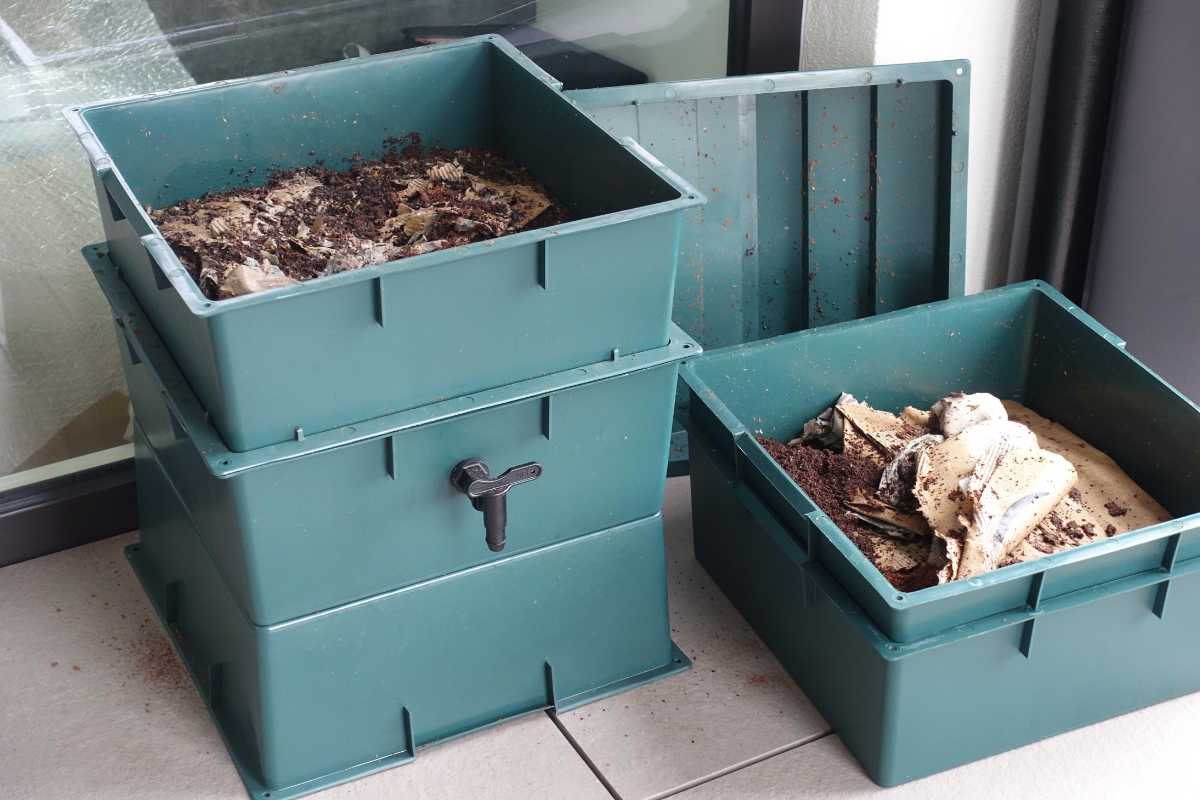
Good compost should not smell, other than an earthy aroma. By the time you are using your compost, it should have broken down so much that there is nothing to cause a stink.
If your compost does smell bad, then I would steer clear of using it as it may be that it has not rotted down enough, or there could be something in it that won’t be good for your plants.
If you’re unsure, it’s best to err on the side of caution. You can always leave it outside to further decompose until the smell has gone.
If you have a composter that smells bad, then there are ways you can fix it. Smelly compost usually indicates that it is too wet, not aerated enough, or an imbalance of carbon to nitrogen. Here are many great pro composting tips.
Be sure to also check that the browns and greens balance of ingredients is 50/50 in your compost bin. It could be that you have too many food scraps and kitchen scraps, compared to dry leaves and other garden waste.
An imbalance of too many greens could result in many fruit flies on the compost pile.
Pests and Diseases in Compost Indoors
Pests and diseases can be present if using compost from your own backyard, especially if the compost heap is open at the top. There are ways to help prevent pests and plant diseases when bringing the compost inside the house.
You can sterilize your compost to get rid of pests. If you have ensured that no diseased plant cuttings were added to the compost pile, it should be pretty disease free.
Store bought compost is always treated to make certain that it is pest and disease free. You can also find compost online or at your local gardening shops.
This does not mean that your houseplants will be invulnerable to pests and disease, however.
Overwatering can cause multiple problems in the compost of your houseplants and can lead to numerous diseases. Houseplants are actually easier to revive from underwatering than overwatering.
While fungal disease can build up in the compost for indoor plants, it doesn’t usually originate there – as long as you carefully select the compost you use.
Compost and Houseplant Troubleshooting
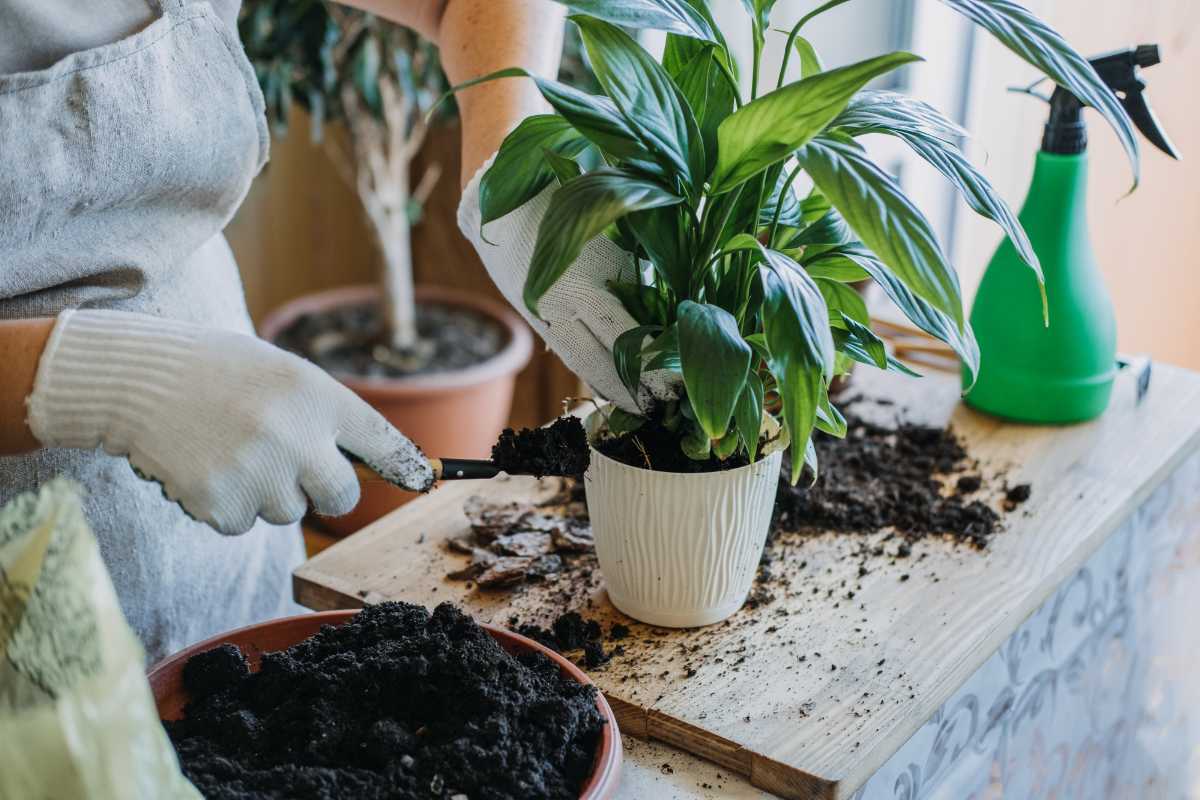
So you’ve added compost to your indoor plants, but something seems off. Don’t worry; you’re not alone. Whether it’s signs of over-fertilization or a mysterious mold appearing, I’ve got solutions for you. Let’s navigate through some common problems and their fixes when using compost for potted plants.
Problem 1: Over-Fertilization
Symptoms: Yellowing leaves, poor water absorption
Solution: Remove some of the compost and replace it with regular potting soil. Going forward, use less compost in pots.
Problem 2: Mold Growth
Symptoms: White or green mold appearing on the surface of the compost
Solution: This is a common issue when using indoor plant compost. Reduce watering and scrape off the mold. Ensure better aeration for the soil.
Problem 3: Root Rot
Symptoms: Wilting plants, rotten smell
Solution: Root rot can occur if compost for house plants retains too much moisture. Consider repotting the plant in fresh, well-draining soil.
Problem 4: Pests
Symptoms: Presence of small bugs, poor plant growth
Solution: Sterilize your compost before use, especially if you’re using outdoor compost for indoor plants. Insecticides can also be used as a last resort.
Problem 5: Nutrient Imbalance
Symptoms: Discolored or drooping leaves
Solution: This often happens when you don’t use the best compost for house plants. Test the soil and adjust your compost type accordingly.
Problem 6: Bad Odor
Symptoms: Unpleasant smell coming from the pot
Solution: Bad odor can mean the compost hasn’t fully decomposed. Replace it with well-rotted compost.
Compost in Indoor Plants Final Thoughts
Compost for indoor plants is largely the same as compost for outdoor plants.
While you won’t need as much compost indoors as outdoor plants, your houseplants will definitely benefit from some added compost when you repot them.
There is no need to add compost to your houseplants regularly, but if you’re worried about your plant’s health, there are plenty of ways to add nutrients to the soil.
There are lots of plant food on the market that are specifically for houseplants. Like these online.
I do actually use my own compost for my houseplants, and I have had great success with many plants. The exception to this is with succulents and cacti, which prefer sandier soil.
You can mix your compost with grit or similar materials to aid drainage, but I do recommend buying a compost mix that is specifically for these types of plants.
I have started plants, such as Aloe Vera, in a store bought potting mix, but then added my own compost when I repot them. I pop in a few stones to aid drainage, especially at the bottom of the pot, so the roots will sit above any water that drains out.

